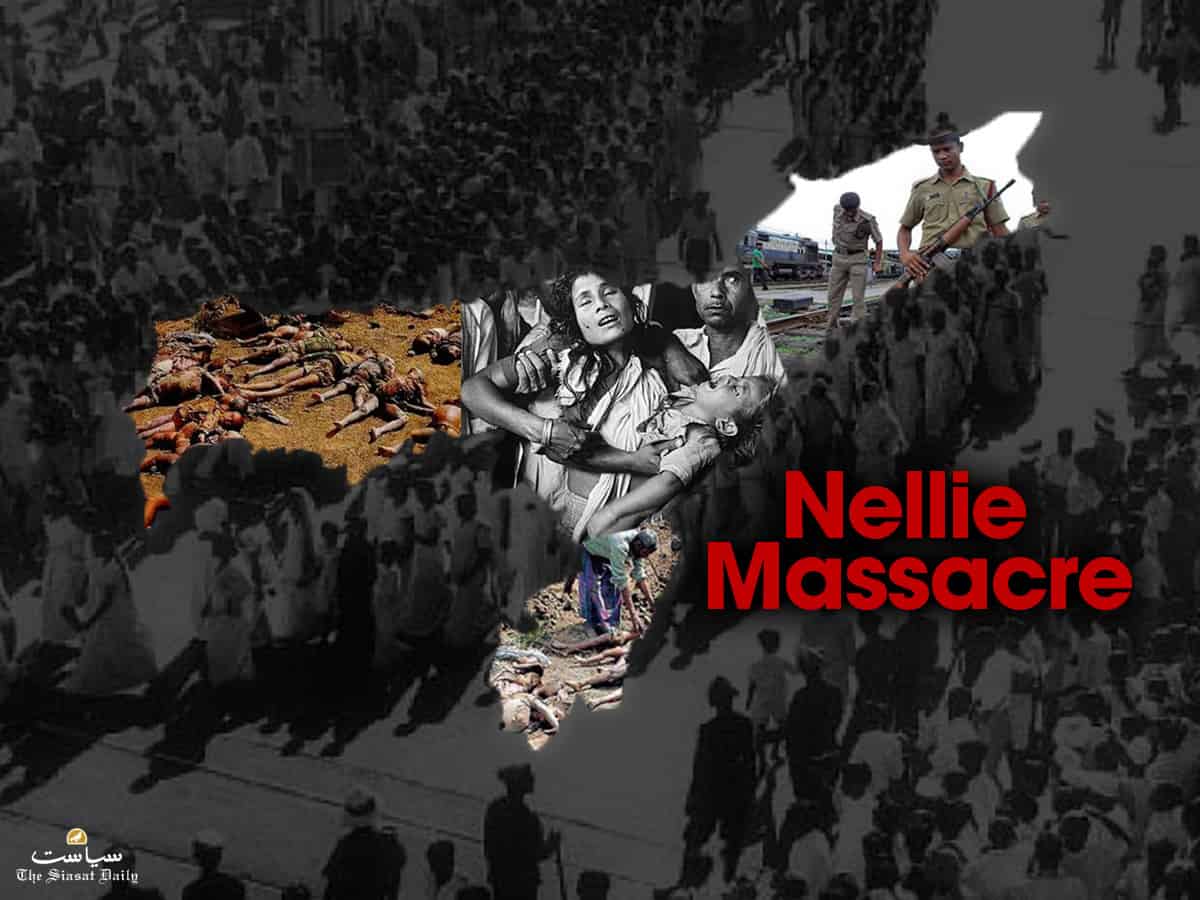
February 19, marks the 39th anniversary of the Nellie massacre in central Assam, where according to official reports, around 2000 people were butchered in broad daylight in a span of six hours in 14 villages in the Nagaon district. Unofficial figures claim that more than 15,000 Muslims were slaughtered.
Most of the people who were massacred that day were old people, children and women, according to reports. Three media personnel, Hemendra Narayan of Indian Express, Bedabrata Lahkar of Assam Tribune and Sharma of ABC, were witnesses to the massacre which is also regarded as one of the worst pogroms since World War II.
Backdrop of the pogrom
A member of parliament, Hiralal Patwari passed away in 1978, which necessitated a by-election in the Mangaldoi Lok Sabha Constituency. During the process of the elections, it was alleged that the electorate had grown significantly. Further investigations alleged that huge numbers of illegal migrants had been included in the electoral rolls.
Subsequently, the All Assam Students Union (AASU) demanded the by-elections be postponed until the names of alleged “foreign nationals” were deleted from the electoral rolls. The AASU went on to launch an agitation to coerce the government to identify and expel the people accused of being illegal immigrants.
The bloodbath started from Nellie after the government decided to hold the controversial Assembly elections in 1983 in the face of opposition from several elements in the state. The police officials reportedly had suggested holding the polls in phases in order to avoid violence.
According to the then Assam inspector general of police, KPS Gill, there were 63 constituencies, where elections could have been held without any trouble, however, the Assam police had declared that there were 23 constituencies where it was impossible to hold any elections.
400 companies of the central paramilitary force and 11 brigades of the Indian Army were deployed to guard Assam while the polls were scheduled to take place in phases.
The official Tiwari Commission report on the Nellie massacre is still a closely guarded secret (only three copies exist) which is the 600-page report submitted to the Assam Government in 1984. The Congress government, headed by Hiteshwar Saikia decided not to make it public, and subsequent governments followed suit.
The Assam United Democratic Front and others tried making legal efforts to make the Tiwari Commission report public, to ensure that reasonable justice is delivered to the victims of the genocide, at least 39 years after the incident.
Role of Rajiv Gandhi and Atal Bihari Vajpayee
The police reportedly filed 688 criminal cases, of which 378 cases were closed due to “lack of evidence” and 310 cases were charged. However, all these cases were dropped by the government of India as a part of the 1985 Assam Accord, because of which, not a single person received punishment.
The then Prime Minister Rajiv Gandhi signed the Assam Accord with the leaders of the AASU to formally end the Assam Agitation in 1985. The following year in 1986, the Citizenship Act was amended.
As Assam was preparing for polls in 1983, Atal Bihari Vajpayee, as the then Bharatiya Janata Party (BJP) president was campaigning in the state.
“Foreigners have come here and the government does nothing. What if they had come into Punjab instead? People would have chopped them into pieces and thrown them away,” Vajpayee was quoted by former CPI-M MP Indrajit Gupta during a debate on trust vote moved by Atal Bihari Vajpayee in May 1996.
It should be noted that the attributed portion of speech went uncontested in the Lok Sabha.

